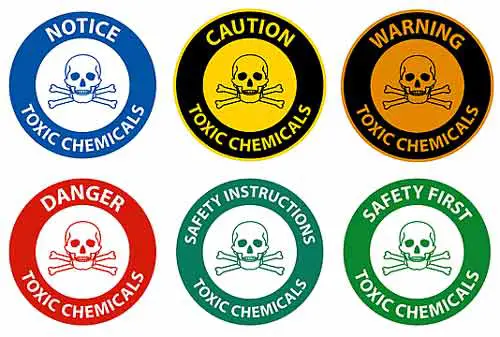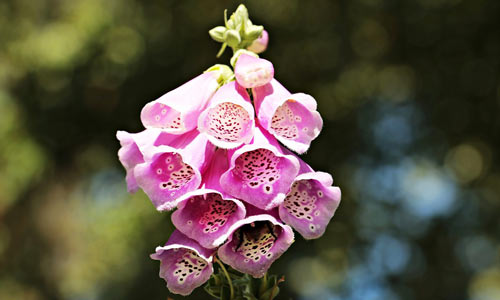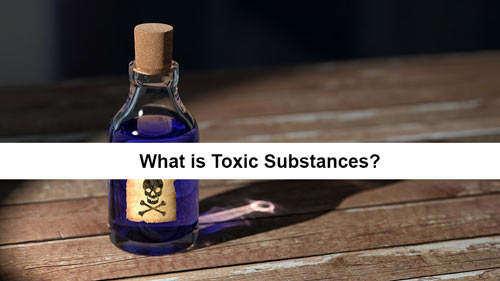In our everyday life, we use to experience a lot of things, we use many products, and we work under any circumstances. Where there is the presence of Toxic Substance.
A term we need to know, and it is important to know. Maybe you are using prescribed drugs on a regular basis. Or you work in a coal meal. Or you are a gardener. No matter where you are, or what you use, you must have proper knowledge of toxic materials.
Toxicity is a term that is often used to describe the harmful effects of chemicals on human health and the environment. A toxic substance can be anything from hazardous waste sites, a weed killer to a pesticide, and it can have a wide range of harmful effects on people, animals,s and the environment.
I list some of the most common toxic substances. Keep in mind that this is not an exhaustive list – toxic substances exist that are not listed here, and toxicity can vary depending on the dosage, route of exposure, and other factors. If you are ever unsure about the safety of a chemical, always consult your doctor or environmental health specialist, or a chemist.
Let’s start reading.
What is Toxic Substance?
A toxic substance is any substance or material that can be harmful to your health. This includes chemical substances, heavy metals, products that we use daily, and pesticides. It’s important to know the signs and symptoms of exposure, and take action if you are experiencing them or you saw people or animals experiencing it.
Toxic substances can be harmful to your health, and it’s important to know what they are and what to do if you’re exposed to them.
For example, if you’re exposed to a chemical substance, seek medical help immediately. And if you’re concerned about your exposure to heavy metals, speak to a health professional about it.
List of Toxic Substances

There are many types of toxic substances that can be dangerous if ingested or inhaled. When in doubt, always consult a doctor. This list of toxic substances includes some of the most common ones. Make sure to keep these toxic substances out of reach of children and pets – they could be deadly if ingested or breathed in!
Formaldehyde
Formaldehyde is a toxic substance that can cause health problems such as asthma and dermatitis, as well as cancer. It is commonly found in homes, household products, pressed-wood products and can be inhaled or absorbed through the skin. You can reduce your exposure to formaldehyde by cleaning your home regularly, using air purifiers, and avoiding products with high levels of formaldehyde.
Another thing is when formaldehyde dissolves with water it becomes formaline which is commonly used as a preservative in some foods and in products.
Mercury
A very common substance that is found in air, water, and soil is Mercury.
Mercury is a neurotoxin that can cause major damage to the brain and nervous system. It is important to be aware of the dangers of mercury exposure and take precautions to minimize your risk. Over time, all humans and animals come into contact with some type of mercury. We are mostly exposed to methylmercury.
B2B businesses should be particularly mindful as many products contain this dangerous substance, from vaccines and dental amalgams to computer monitors and even air fresheners! By being proactive, you can reduce your exposure significantly while helping protect yourself and those around you.
Lead
Lead is a cumulative toxicant that can have serious health consequences for young children.
Lead exposure can cause high blood pressure and kidney damage and other health complications. It should be avoided at all costs – it’s definitely toxic!
Even in small doses, lead has been known to cause cognitive impairment in children and fetuses as well as damage the nervous system. So if you are concerned about your health or that of your loved ones’ safety, avoid exposure to lead at all costs!
Asbestos
Asbestos is a dangerous mineral that has been banned in many countries due to its hazardous nature. Workers engaged in mining, mealing, the car repair industry, ironworkers, and bricklayers are mostly exposed to asbestos.
It was used extensively throughout the years in products like insulation, buildings, and car brakes – even now it causes health concerns if breathed in.
If you are unsure about whether or not a substance is toxic, always seek professional advice. Remember asbestos can be deadly if inhaled and remembered: asbestos should never be touched!
Hazardous/Toxic Air Pollutants
Air pollutants can have a wide range of health implications, from cancer to respiratory problems and heart disease. To reduce your risk of exposure, it’s important to be aware of the sources of these hazardous air pollutants and take steps to avoid them.
Some common contaminants include benzene, arsenic, and lead. These toxic substances can be found in the environment as a result of human activities like factories, car emissions, or burning garbage.
If you are concerned about your health risks related to harmful air pollutants, make sure to read up on what they are and how you can reduce your exposure.
Per- and Polyfluoroalkyl Substances (PFAS)
Polyfluoroalkyl Substances (PFAS) are a group of man-made chemicals that have been linked to serious health problems. We need to be especially careful when it comes to these substances in our homes and workplaces, as they can contaminate water, food, and soil – putting us all at risk.
We know over 100 PFAS compounds so far, but there are likely many more out there that we haven’t yet discovered. These chemicals have been found in both human and environmental samples around the world – raising concerns about their potential effects on humans and the environment.
These synthetic components can be found in countless domestic and industrial products, including clothing, carpets, upholstery fabrics for furniture, tape adhesives, paper packaging for food, and heat-resistant non-stick cookware.
Pesticide Chemicals
Pesticides are toxic chemicals used to kill weeds, insects, and other pests. They can be harmful if ingested or if they get into contact with skin or eyes. Pesticide use should only be conducted in a safe and effective manner according to the instructions on the label.
It is also important to be aware of the ingredients in the products you use and read their labels carefully.
Polychlorinated Biphenyls (PCBs)
PCBs are a type of toxic substance that can harm your health. They are found in many everyday products, such as paints, plastics, and furniture. Over time, PCBs can cause cancer and other diseases. You should avoid them at all costs if you want to stay healthy and safe!
Toxic Substances Exists in Plants

There are toxic substances found in plants, and they can be dangerous if ingested. Some of the most common toxic substances found in plants are solvents, pesticides, and herbicides.
If you’re ever unsure of the safety of a plant, call poison control to get advice. They’ll be able to tell you if the plant contains any of the toxic substances listed above, and they’ll also be able to provide you with tips on how to avoid exposure.
Additionally, if you or your pet do accidentally ingest a toxic substance from a plant, consult a doctor or vet urgently. They’ll be able to help you get the necessary assistance and save your life!
Alkaloids
Alkaloids are substances that cause a wide range of effects on humans and pets. These include minor irritation to death. The most common alkaloids are used as drugs to treat pain. It is found in plants and can be found in different parts of the plant – leaves, stems, and flowers. Plants of the poppy family contain alkaloids.
Glycosides
Glycosides are a type of toxic substance found in plants. They can be harmful to human health because they can block nerve impulses and cause poisoning.
Glycosides are also found in many different types of plants like Foxglove, Oleander, In some vegetables, and also in some fruits. Some examples of glycosides are anthraquinone, coumarin, cyanogens, flavonoids, glucosinolates , phenols.
Tannins
Tannins are a type of toxic substance found in plants. They can be found in different parts of the plant – roots, leaves, flowers etcetera. Tannins are responsible for the astringent, bitter taste of many plants. They can also be found in wildcrafted foods and herbal remedies.
Proteins
Proteins are essential for both human and plant health. They play an important role in the body by helping to break down toxins, store energy, form cell membranes, and protect the body from pests and diseases.
Some proteins can be harmful if ingested – this happens because of their metabolic waste build-up in the body. Plant proteins help to store energy and protect themselves from pests and diseases. Proteins also play a vital role in photosynthesis – the process by which plants convert carbon dioxide into oxygen gas through photosynthesis!
Oxalic acid and Oxalates
Oxalates are colorless substances and naturally-occurring compounds found in plants. Oxalic acid in contact with tissue can cause burning or ulcers.
Leafy greens and other low-oxalate vegetables are the best way to avoid oxalates, as they contain high levels of these toxin minimizers.
Anti-Vitamins
There are many health benefits to taking anti-vitamins. However, it is important to be aware of the possible side effects before starting to take them in large quantities.
Some anti-vitamins can even be harmful if taken in higher doses, so always speak with a doctor first. There are a number of plants that contain anti-vitamins – this help improves health by tackling various issues such as preventing disease or boosting the immune system.
Speak to your GP doctor about whether you should start taking supplements for general health reasons and avoid any potential risks associated with the overuse or misuse of these products.
Volatile Oils
When it comes to volatile oils, it is important to be aware of the dangers they can cause. These oils are found in plants and can easily become dangerous if absorbed through the skin or ingested. Some of the most common volatile oils include terpenes, which contribute to a plant’s aroma. If you’re planning on growing plants indoors, make sure to avoid those with high levels of these dangerous chemicals! Furthermore, when cooking or gardening with fresh produce be very careful not to inhale any fumes – even from seemingly harmless plants!
Furocoumarins
Furocoumarins are a type of toxin found in plants. They can be colorless and odorless and can be poisonous to humans. Furocoumarins have been linked to damage to the liver, kidney, lungs, skin and eyes. Also, it causes cell death and inflammation.
The best way to avoid them is by eating organic food as much as possible.
Lectins
Lectins are one of the most toxic substances found in plants. They can cause inflammation, disease and even death when ingested. As a result, it is important to be mindful of what lectins you eat and make sure they come from healthy, organic sources. To reduce your exposure to lectins, eating plenty of fruits and vegetables is a great way to go! Not only will this help protect your health but also improve your overall nutritional status.
Solanines and Chaconine
Solanines and chaconine are two toxic substances that can be found in plants. These substances are harmful if ingested by humans, as they can cause skin irritation, nausea, vomiting, diarrhea, and even death. It is important to be aware of these toxins so you can avoid them when gardening or cooking with plants. Make sure to read the labels of food items carefully to stay safe and healthy!
Poisonous Mushrooms
There are poisonous mushrooms that can be dangerous if ingested. Some poisonous mushrooms are – Death Cap, Webcaps, Autumn Skullcap, Destroying Angels
While some plants may not look harmful, they could contain toxic substances that can be hazardous to our health. Therefore, it is important to stay away from any plants you know aren’t safe – even if they don’t seem like they would pose a threat. By doing so, you will reduce your chances of getting sick or worse!
Check out this video to know more about toxic chemicals.
Frequently Asked Questions (FAQs)
How do I know if a substance is hazardous, and what should I do if I find it on my property or in my cat food?
Answer: If you’re concerned about the safety of a substance on your property or in your cat food, you can determine its hazardousness by its chemical composition, toxicity levels and potential for causing harm. For example, if you find a substance with a high concentration of mercury, that substance may be hazardous and should not be touched or ingested. In the event of accidental exposure, call 911 or your local poison control center for guidance.
Conclusion
Thank you for reading! Now you know the effects of these substances and make an informed decision about whether or not to expose them.
Stay safe and healthy!


